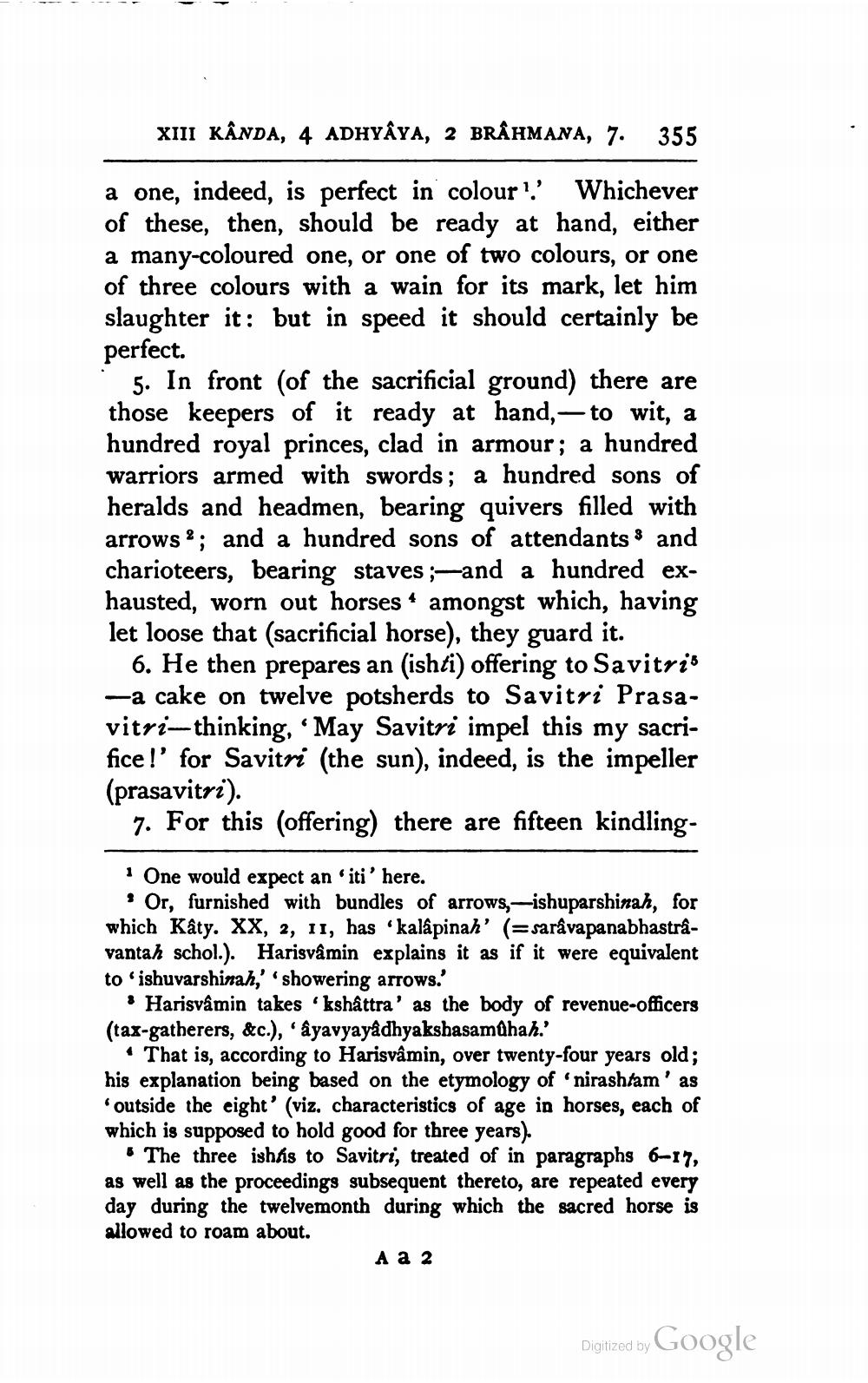________________
XIII KÂNDA, 4 ADHYÂYA, 2 BRÂHMANA, 7. 355
a one, indeed, is perfect in colour?' Whichever of these, then, should be ready at hand, either a many-coloured one, or one of two colours, or one of three colours with a wain for its mark, let him slaughter it: but in speed it should certainly be perfect.
5. In front (of the sacrificial ground) there are those keepers of it ready at hand, - to wit, a hundred royal princes, clad in armour; a hundred warriors armed with swords; a hundred sons of heralds and headmen, bearing quivers filled with arrows ?; and a hundred sons of attendants : and charioteers, bearing staves ;—and a hundred exhausted, worn out horses 4 amongst which, having let loose that (sacrificial horse), they guard it.
6. He then prepares an (ishti) offering to Savitris -a cake on twelve potsherds to Savitri Prasavitri-thinking, 'May Savitri impel this my sacrifice!' for Savitri (the sun), indeed, is the impeller (prasavitri).
7. For this offering) there are fifteen kindling
1 One would expect an iti' here.
* Or, furnished with bundles of arrows-ishuparshinah, for which Kâty. XX, 2, 11, has kalápinah' (=saråvapanabhastravantah schol.). Harisvâmin explains it as if it were equivalent to 'ishuvarshinah,' showering arrows.
• Harisvâmin takes kshâttra' as the body of revenue-officers (tax-gatherers, &c.), 'âyavyayâdhyakshasamQhah.'
That is, according to Harisvâmin, over twenty-four years old; his explanation being based on the etymology of 'nirashtam' as
outside the eight' (viz. characteristics of age in horses, each of which is supposed to hold good for three years).
* The three ishfis to Savitri, treated of in paragraphs 6-17, as well as the proceedings subsequent thereto, are repeated every day during the twelvemonth during which the sacred horse is allowed to roam about.
Аа2
Digitized by Google




